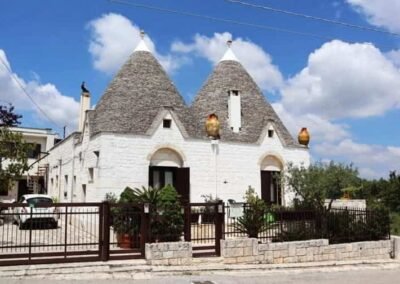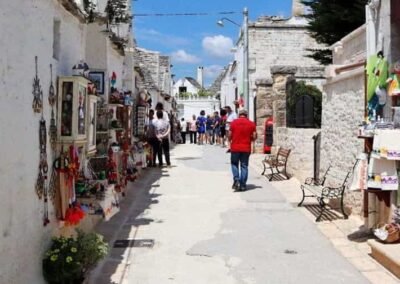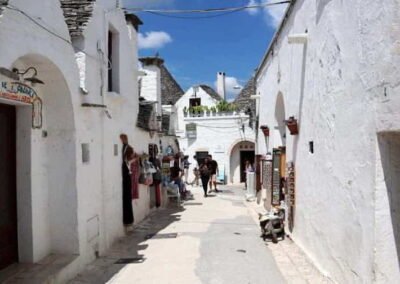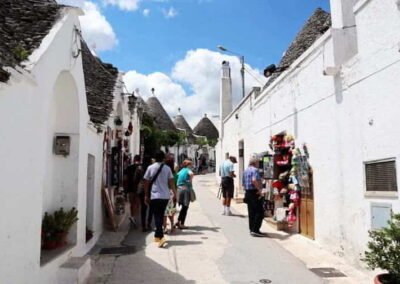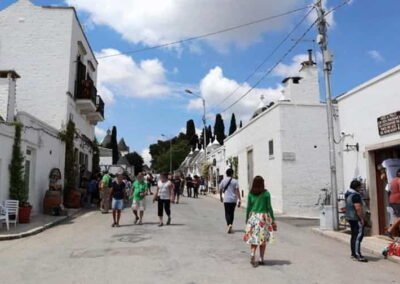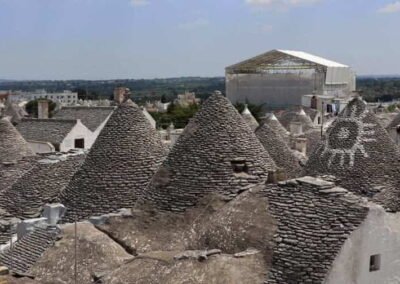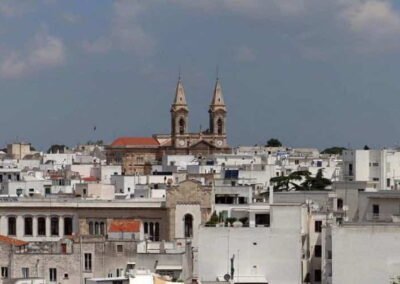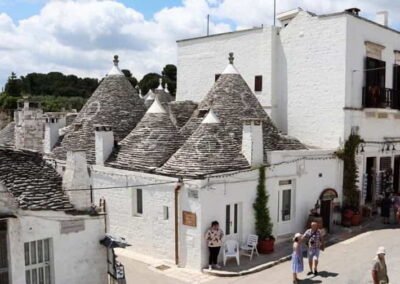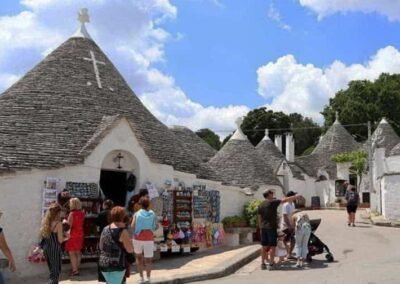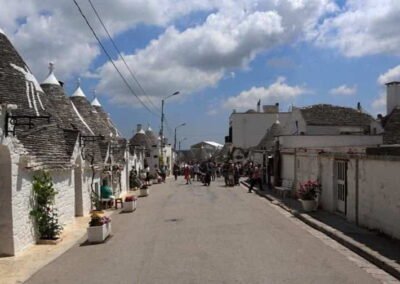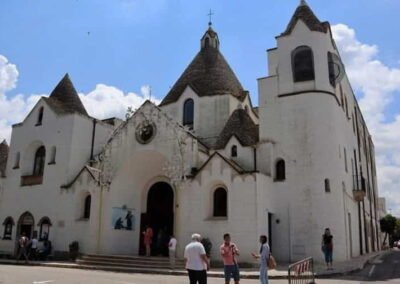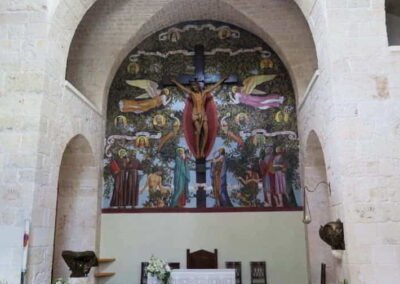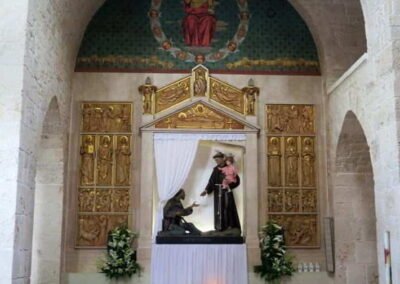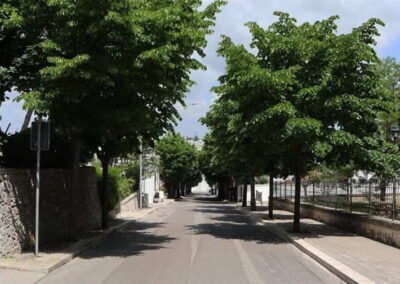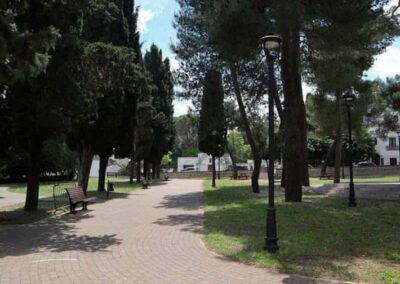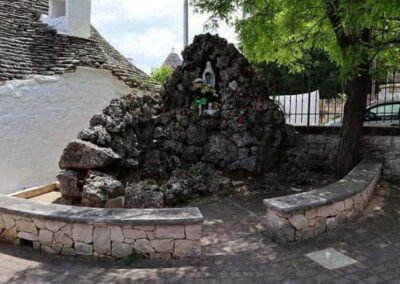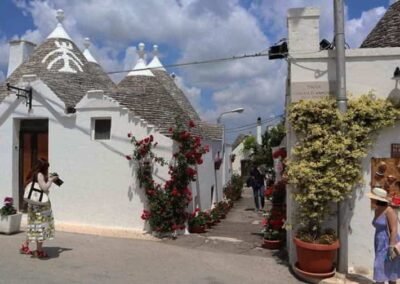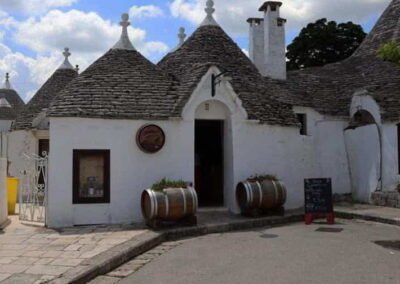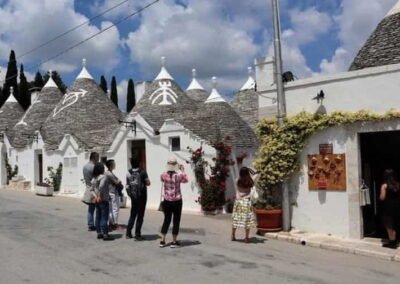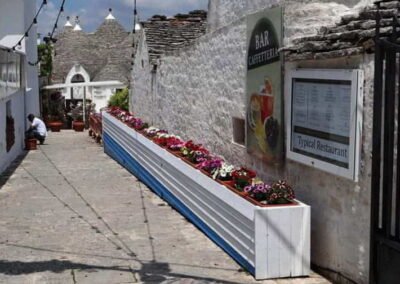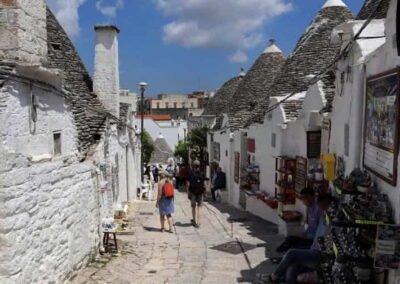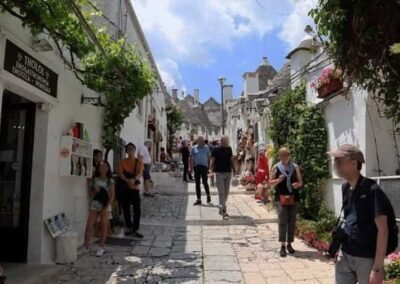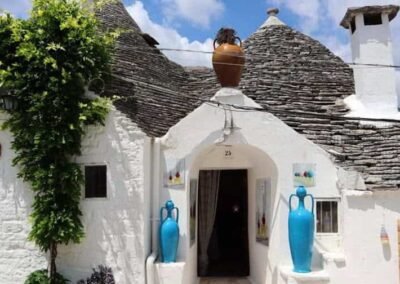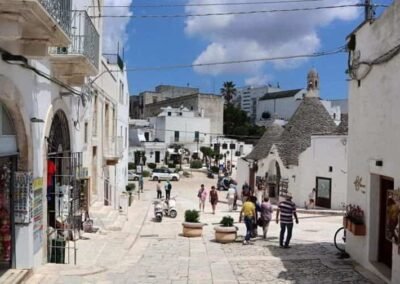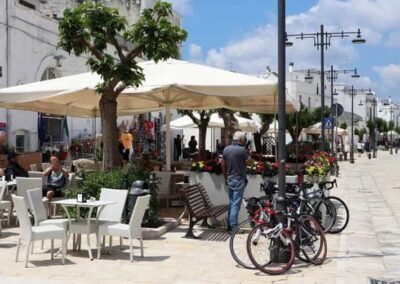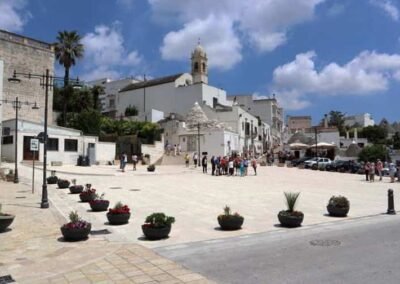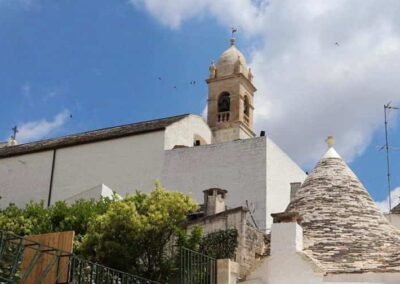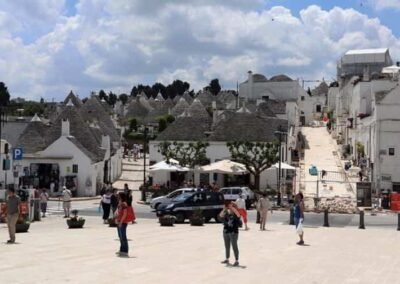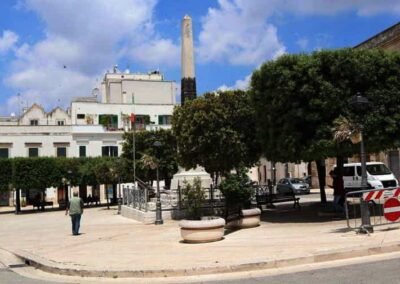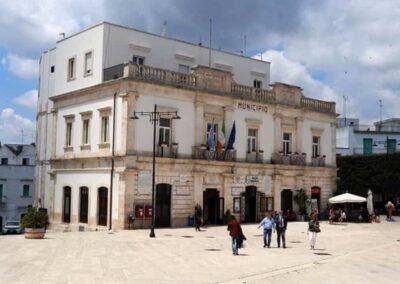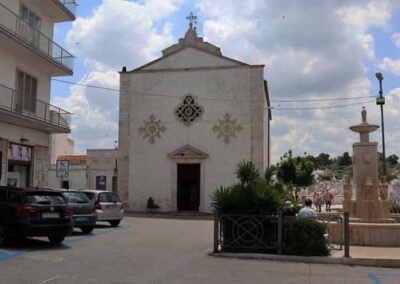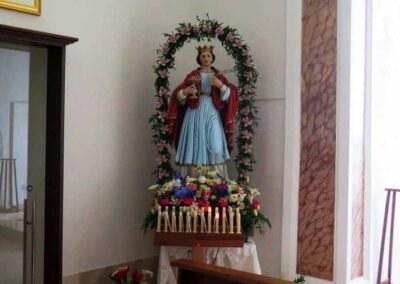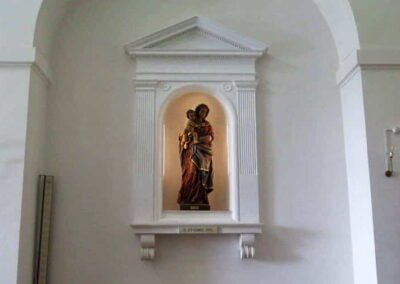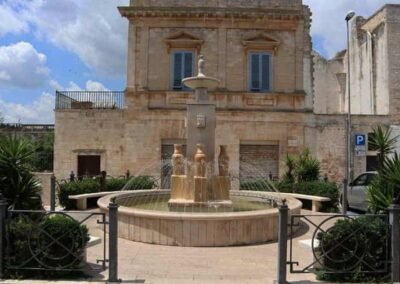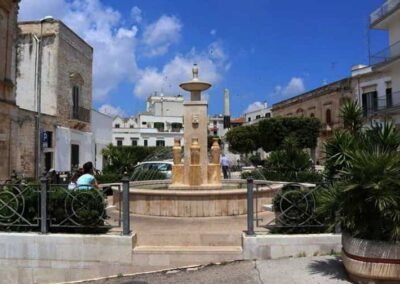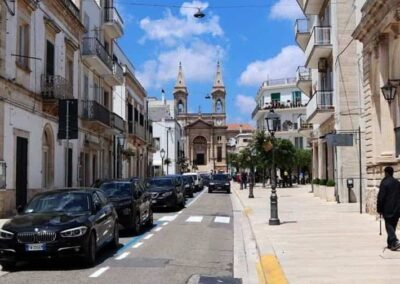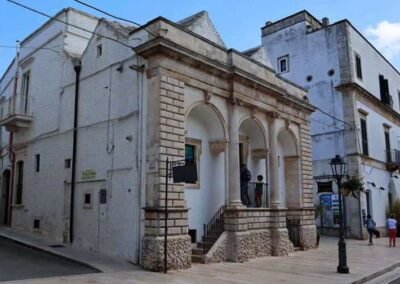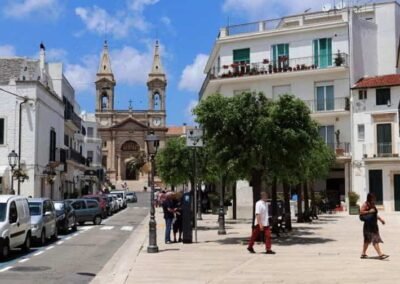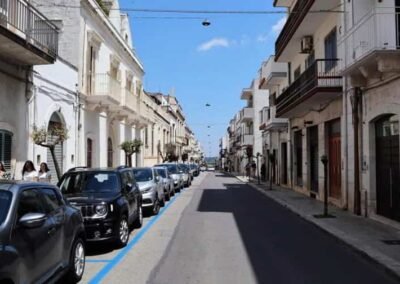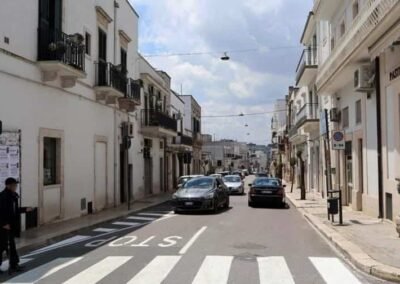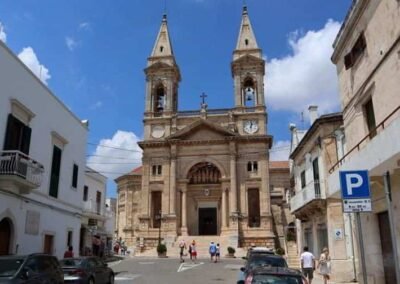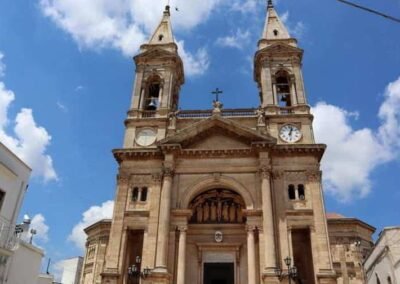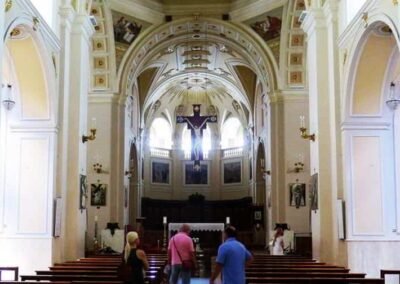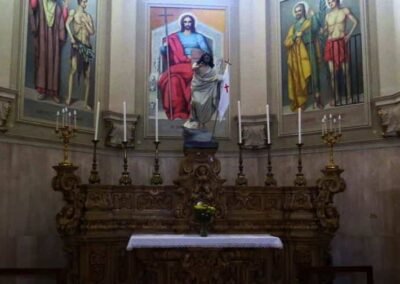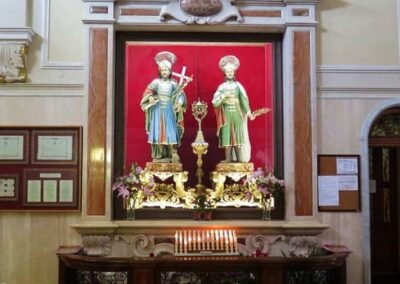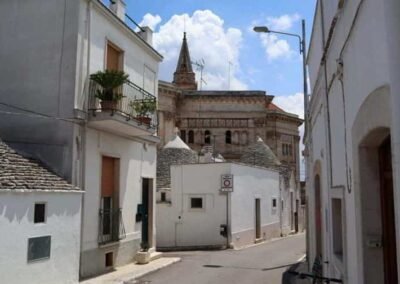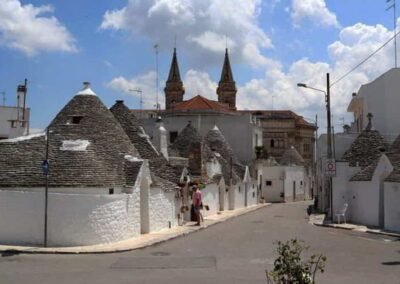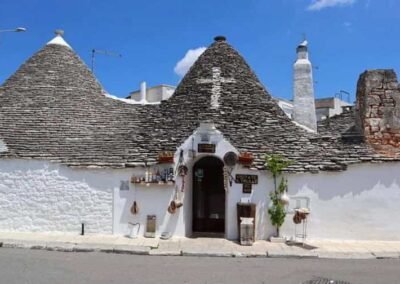HOME
THE REGIONS OF ITALY
PLACES IN ITALY
Italy in Photos
Via Monte S. Gabriele, 70011 Alberobello, Italy (June 2019)
Alberobello
Alberobello is a small but enchanting town located in the Puglia region of southern Italy, famous for its distinctive whitewashed stone houses known as trulli. Recognized as a UNESCO World Heritage Site, Alberobello stands out as one of the most unique and picturesque destinations in the country. Set on the gentle hills of the Itria Valley, the town offers an unforgettable scene of cone-shaped roofs clustered along narrow lanes, creating an atmosphere that feels both ancient and magical.
The history of Alberobello is as fascinating as its architecture. The town began to take shape in the fifteenth century, when peasants settled on the land owned by the Counts of Conversano. To avoid paying taxes to the Kingdom of Naples, they built their homes using dry stone construction, without mortar, so they could be easily dismantled if inspectors arrived. These structures, called trulli, proved to be remarkably durable, and over time they became a permanent and defining feature of the town. Their thick limestone walls keep the interiors cool during the hot Puglian summers and warm during the mild winters, demonstrating the builders’ clever adaptation to the local environment.
The two main districts of Alberobello, Rione Monti and Aia Piccola, are the best places to explore the town’s heritage. Rione Monti, with its winding streets and more than a thousand trulli, is the most famous and often filled with visitors browsing small shops and cafes. Aia Piccola, on the other hand, remains more residential and tranquil, offering a glimpse of everyday life in this extraordinary setting. Both areas together form a living museum that celebrates Puglia’s rural traditions and architectural ingenuity.
Beyond its unique buildings, Alberobello is also a place of vibrant culture and warm hospitality. The town hosts numerous local festivals, religious processions, and folk events that reflect the deep-rooted spirit of southern Italy. Traditional dishes such as orecchiette pasta, local cheeses, and fresh olive oil showcase the richness of Puglian cuisine. From the nearby olive groves to the vineyards of the Itria Valley, the surrounding landscape complements the town’s charm with its natural beauty and agricultural abundance. Alberobello is more than just a destination; it is an experience that combines history, architecture, and authenticity. Walking through its whitewashed alleys under the bright southern sun, visitors feel transported to another time, discovering a place where simplicity and creativity come together in perfect harmony.
Worth a Visit
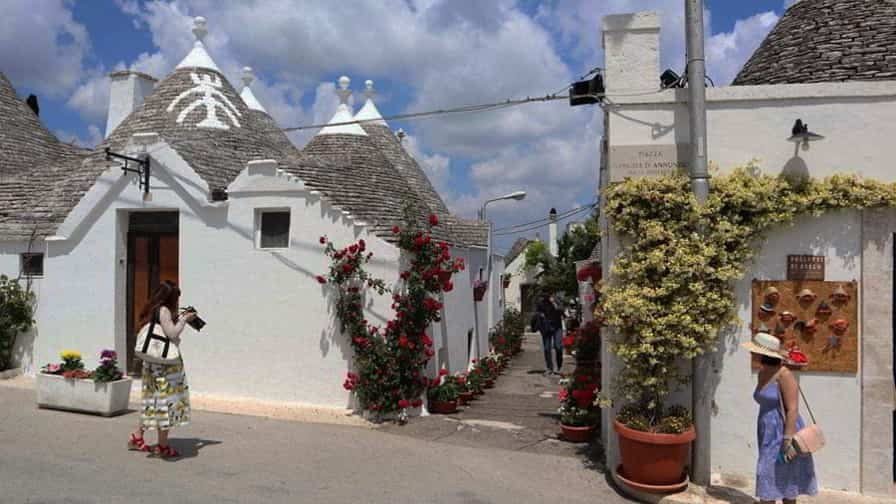
Situated in the heart of Alberobello, a UNESCO World Heritage town in the Apulia region of southern Italy, Piazza Gabriele D’Annunzio offers a unique blend of historical charm and local culture. This picturesque square is named after the celebrated Italian poet, playwright, and patriot Gabriele D’Annunzio, a towering literary and political figure of the late 19th and early 20th centuries. The piazza stands as a symbolic link between the town’s rich architectural heritage and Italy’s broader cultural history. Alberobello is world-famous for its “trulli”, traditional dry-stone huts with conical roofs, built without mortar and characterized by their whitewashed walls and stone-tiled domes. These structures create an almost fairy-tale like setting, and Piazza Gabriele D’Annunzio is ideally situated as a point of entry into this magical atmosphere
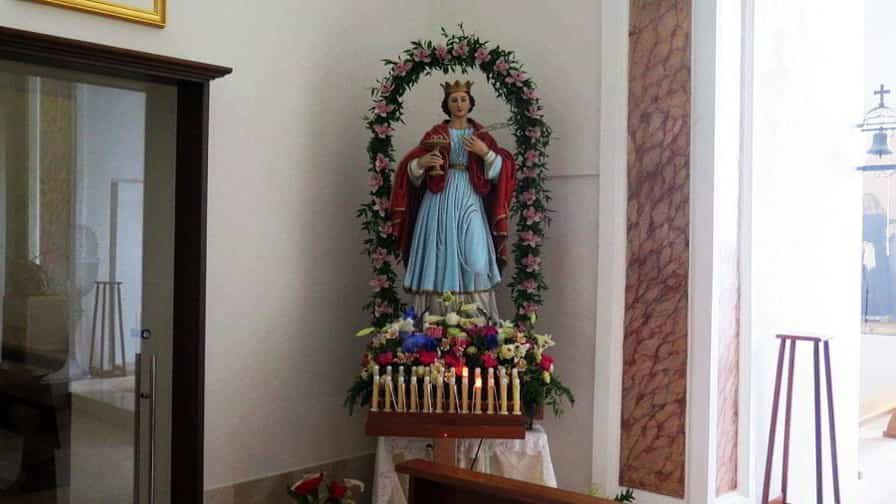
Tucked away in the enchanting town of Alberobello in southern Italy, the Chiesetta Rettoria SS. Sacramento e S. Lucia is a small yet spiritually significant church that offers visitors a quiet moment of reflection amidst the town’s iconic trulli landscape. Located in a more tranquil part of Alberobello, this charming church is a testament to the enduring faith and devotion of the local community. Though modest in size, it holds an important place in the religious and cultural life of the town. Amidst the limestone cones and cobbled alleys lies this intimate church dedicated to the Most Holy Sacrament (SS. Sacramento) and Saint Lucy (S. Lucia), a revered Christian martyr known for her association with light and vision.
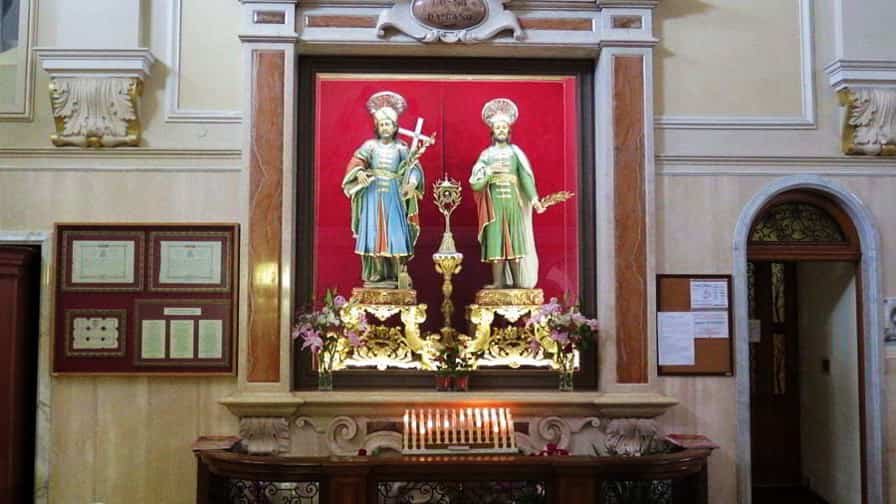
At the spiritual and cultural heart of Alberobello, the Basilica of Saints Cosma and Damiano stands as a beacon of faith, tradition, and local identity. Located near the town centre, this magnificent church is the main place of worship in Alberobello and is dedicated to the twin saints Cosma and Damiano, who are highly venerated in the region. Their legacy as early Christian martyrs and patron saints of doctors and pharmacists resonates deeply with the community, making the basilica not only a religious landmark but also a symbol of protection and healing. The basilica’s origins date back to the late 18th century, when it was first built to replace a smaller chapel on the same site.
Photo Gallery of Walk 1 in Alberobello – Via Monte S. Gabriele to Via Monte S. Michele
Approximately 0.88 km – 0.55 miles
The Walk starts in – Via Monte S. Gabriele – Via Duca D’Aosta – Via Monte S. Michele – Piazza Gabriele D’Annunzio – Via Monte Pertica – Piazza Canonico Don Antonio – Parrocchia di Sant’Antonio di Padova, Piazza Canonico Don Antonio – Via Cadore – Villa Don Giacomo Donnaloja parroco guanelliano – Via Monte Pertica – Piazza Gabriele D’Annunzio – Via Monte S. Michele
Photo Gallery of Walk 2 in Alberobello – Largo Martellotta to Via del Gesù
Approximately 0.58 km – 0.36 miles
The walk starts in – Largo Martellotta – Via Brigata Regina – Piazza del Popolo – Piazza Giangirolamo – Chiesa Rettoria Succursale Oratorio del SS.Sacramento e S.Lucia compatrona – Fontana di Santa Lucia (A.D.1996), Piazza Giangirolamo – Belvedere-Balconata–Terazza-Balcone di Santa Lucia, Via Contessa – Corso Vittorio Emanuele – Corso Trieste e Trento – Via Cesare Battisti – Piazza Antonio Curri – Chiesa Matrice Basilica minore Pontificia Santuario Parrocchia SS.Medici Cosma e Damiano, Piazza Antonio Curri – Piazza XI Febbraio – Via del Gesù – Piazza Sacramento – Via del Gesù
COPYRIGHT © 2018-2025 ITALY IN PHOTOS - ALL RIGHTS RESERVED
